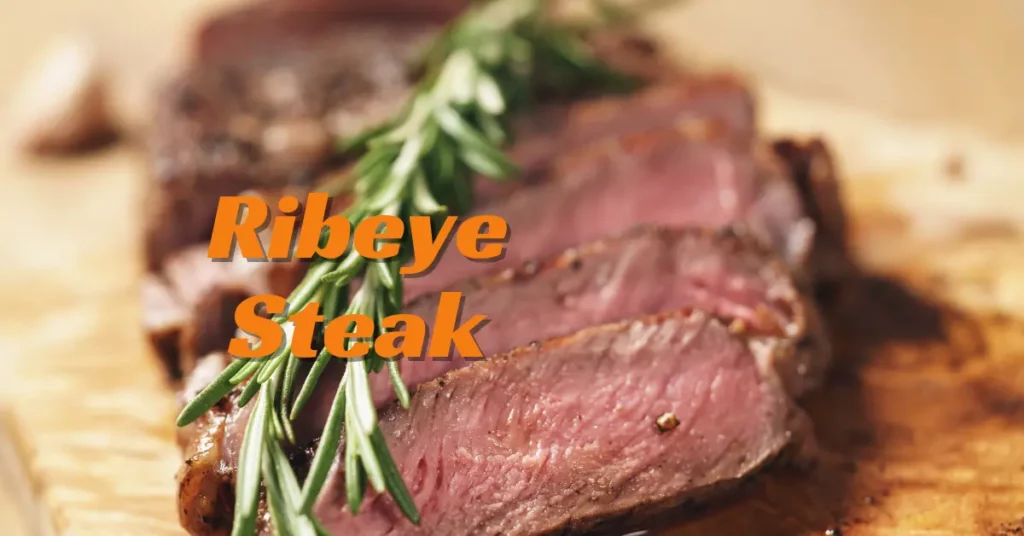This post may contain affiliate links. If you use these links to buy something we may earn a small commission. Thanks.
A perfectly cooked ribeye steak is a true masterpiece tender, juicy, and packed with rich, beefy flavor. The key to achieving steakhouse-quality results at home is selecting the right cut, using proper cooking techniques, and ensuring optimal seasoning. Whether you prefer grilling over an open flame, pan-searing for a perfect crust, or reverse searing for precision, this guide will walk you through every step to create the ultimate ribeye steak.
Choosing the Right Ribeye
Before cooking, selecting the right cut of ribeye is crucial. Not all steaks are created equal, and the right choice can make a huge difference in flavor and texture.
1. Prime vs. Choice Cuts
When shopping for a ribeye, you’ll come across different USDA beef grades:
- USDA Prime: The highest quality, featuring abundant marbling that enhances tenderness and flavor. Found in high-end restaurants and butcher shops.
- USDA Choice: A step below Prime but still well-marbled and flavorful. More commonly available in grocery stores.
- Select or Lower Grades: Leaner and less flavorful due to minimal marbling. Not ideal for a perfect ribeye experience.
For the best results, opt for a USDA Prime or well-marbled Choice ribeye.

2. Bone-in vs. Boneless Ribeye
- Bone-in Ribeye (also known as Cowboy or Tomahawk Steak): Adds extra flavor during cooking and helps retain moisture.
- Boneless Ribeye: Cooks more evenly and is easier to handle.
Both options work well, but if you want a more intense beefy flavor, go for the bone-in version.
3. Thickness Matters
A ribeye that is at least 1.5 to 2 inches thick is ideal. Thicker steaks allow for a better sear while keeping the inside juicy. Thin cuts cook too quickly and can easily overcook.
4. Selecting Fresh Meat
Look for ribeye steaks that have:
- Bright red color (indicating freshness).
- Ample marbling (thin white streaks of fat throughout the meat).
- A firm texture with no off-smell.
Preparing the Ribeye
1. Seasoning Basics
A good ribeye steak doesn’t need heavy seasoning. The classic salt and pepper combo is enough to enhance the natural beefy flavor.
- Coarse salt (Kosher or sea salt): Helps draw moisture for a better sear.
- Freshly ground black pepper: Adds a bold taste.
2. When and How to Season
- At least 45 minutes before cooking (or up to 24 hours in advance). This allows the salt to penetrate the meat, enhancing flavor and tenderness.
- Use 1 teaspoon of salt per pound of steak, ensuring even coverage.
- If seasoning just before cooking, apply a generous amount of salt and pepper right before placing it on the grill or pan.
3. Bringing to Room Temperature
Remove the steak from the fridge 30-45 minutes before cooking to ensure even cooking. Cooking a cold steak results in an overcooked exterior and undercooked interior.
4. Optional Marinades and Rubs
While a simple salt and pepper seasoning is sufficient, you can experiment with:
- Garlic and herb butter rub (mix softened butter with minced garlic, thyme, and rosemary).
- Steakhouse-style dry rub (paprika, garlic powder, onion powder, and cayenne for a spicy kick).
- Soy sauce-based marinade (soy sauce, Worcestershire sauce, olive oil, and garlic for umami flavor).
Cooking Methods
There are multiple ways to cook a ribeye steak, but three techniques stand out: grilling, cast-iron searing, and reverse searing.
1. Grilling a Ribeye Steak
Grilling over an open flame enhances the smoky, charred flavor of a ribeye.
Steps:
- Preheat the grill to 450-500°F (high heat for searing).
- Place the steak directly over the heat and sear for 2-3 minutes per side to develop a crust.
- Move the steak to indirect heat (a cooler part of the grill) and cook for an additional 5-10 minutes, depending on desired doneness.
- Use a meat thermometer to check doneness (see guide below).
2. Cast-Iron Skillet Searing
A cast-iron pan delivers a perfect crust and rich flavor.
Steps:
- Heat a cast-iron skillet over high heat for 5 minutes.
- Add 1 tablespoon of oil (avocado or vegetable oil works best).
- Place the ribeye in the pan and sear for 2-3 minutes per side without moving it.
- Reduce heat to medium and add butter, garlic, and fresh herbs. Baste the steak by spooning the melted butter over it.
- Cook to the desired temperature.
3. Reverse Searing (Best for Thick Steaks)
Reverse searing ensures a perfectly cooked interior with a deep crust.
Steps:
- Preheat the oven to 225°F.
- Place the ribeye on a wire rack over a baking sheet and cook until it reaches 10-15°F below the target temperature.
- Remove from the oven and let it rest while heating a cast-iron skillet.
- Sear the steak for 1-2 minutes per side in a hot skillet with butter and herbs.
Achieving the Perfect Doneness
Internal Temperature Guide
| Doneness | Temperature | Cooking Time (Approx.) |
|---|---|---|
| Rare | 120-125°F | 5-7 min |
| Medium-Rare | 130-135°F | 7-9 min |
| Medium | 140-145°F | 9-11 min |
| Medium-Well | 150-155°F | 11-13 min |
| Well-Done | 160°F+ | 14+ min |
Always use a meat thermometer to ensure accuracy.
Resting the Steak
Let the steak rest for 5-10 minutes before slicing. This allows juices to redistribute, making the meat juicier.
Enhancing the Flavor
1. Compound Butters
Top your steak with flavored butter for extra richness:
- Garlic Herb Butter: Butter, minced garlic, thyme, rosemary.
- Spicy Cajun Butter: Butter, smoked paprika, cayenne, black pepper.
- Blue Cheese Butter: Butter, crumbled blue cheese, chives.
2. Steak Sauces
- Chimichurri: A fresh mix of parsley, garlic, olive oil, and vinegar.
- Red Wine Reduction: A rich, elegant sauce made with red wine, shallots, and butter.
- Béarnaise Sauce: A creamy, tarragon-infused butter sauce.
3. Perfect Side Pairings
Pair your ribeye with:
- Garlic mashed potatoes
- Grilled asparagus
- Sautéed mushrooms
- Creamed spinach
Conclusion
Mastering the perfect ribeye steak is about selecting high-quality meat, seasoning it properly, and using the best cooking method for your preference. Whether you choose to grill, pan-sear, or reverse-sear, following these steps will help you achieve a restaurant-quality steak at home.
Now, fire up your grill or heat up that skillet and enjoy the ultimate ribeye experience.
